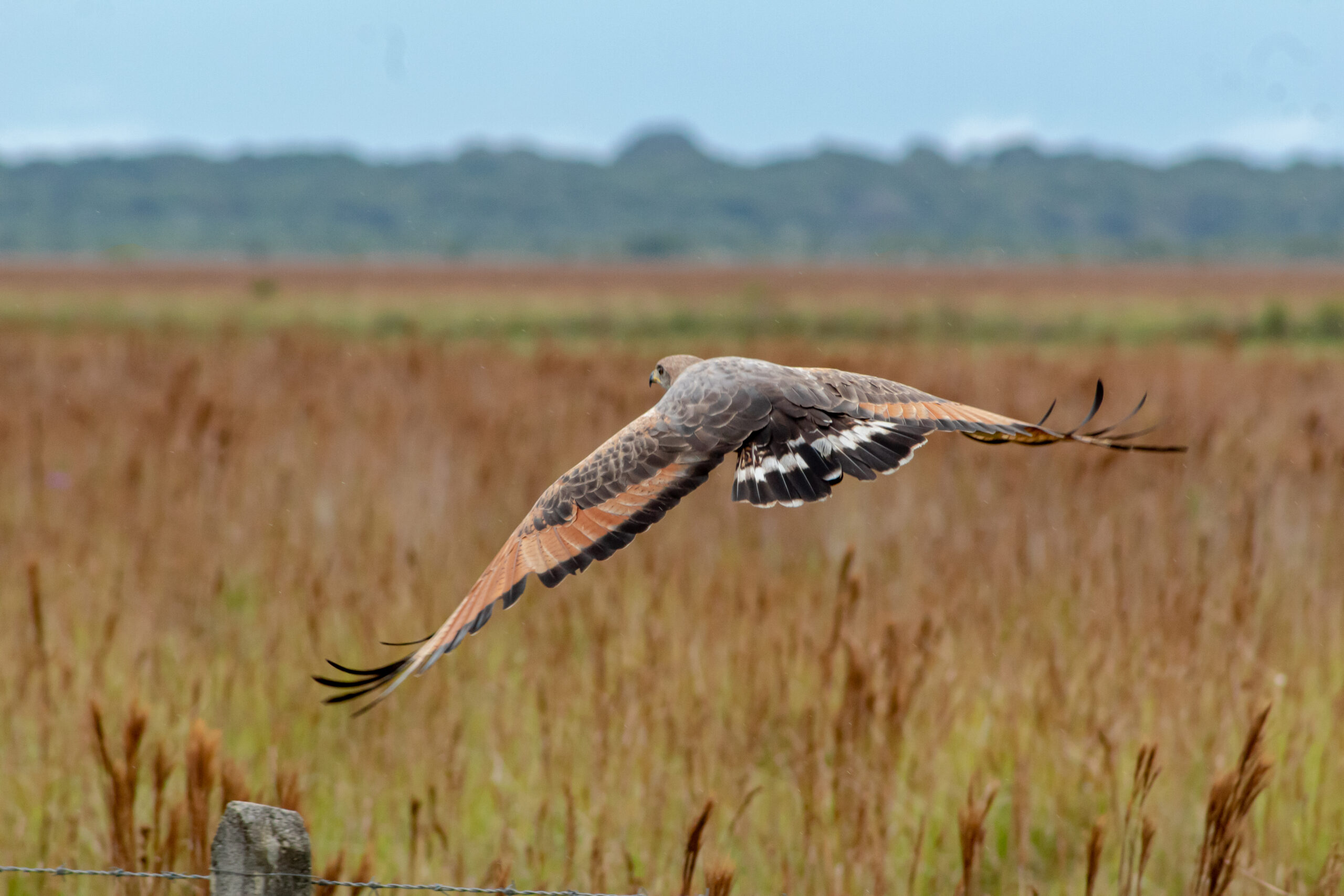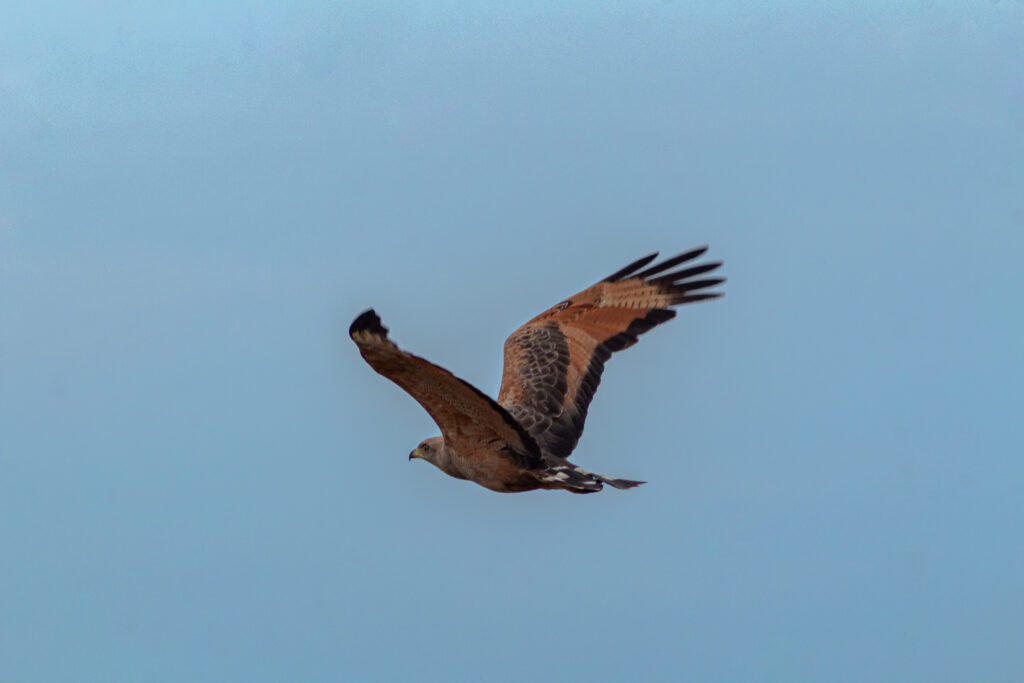
Beautiful raptor with a wide distribution throughout Central and South America. Mostly cinnamon-colored with dark bars on the underparts. The upper parts are dark brown, except for the contrasting cinnamon shoulders. In flight, note the white band on the tail and the mostly cinnamon-colored flight feathers. Immature individuals can be mostly whitish on the head and belly, often with dark spots. Notice the shape (short tail and long legs) and the habitat. They are found alone or in pairs in open habitats, often visibly perched on a fence post or in the crown of a tree.
Order: Accipitriformes | Family: Accipitridae
Scientific name: Buteogallus meridionalis
Common name: Halcón de la sabana, águila sabanera, savanna hawk
Conservation status: Least concern (LC)
Best season for savanna hawk: All year round
Description
Hawk with a wingspan of 121 to 140 cm, featuring a small head, elongated neck and legs, and quite long wings. The head, neck, and underparts are reddish to cinnamon brown. The back of the neck is striped, while the back is dark brown with reddish edges; the underparts are barred with black except for the throat. The tail is black with a narrow median band and a narrow white spot. The iris is reddish yellow to pale brown, and the legs are pale orange-yellow. The female is similar to the male but larger.


Distribution
Panama (from Chiriquí in the west), tropical South America west of the Andes (southwest Ecuador and northwest Peru), and north of Colombia east to Venezuela, Trinidad, and the Guianas, and south through much of Brazil, east of Bolivia, and Paraguay to northern Argentina (Tucumán, Córdoba, and Santa Fe) and northern Uruguay; it has likely colonized Costa Rica (recently recorded in the southwest).
Habitat
Tropical to subtropical areas, mainly up to 1000 m but exceptionally up to 2075 m in Colombia, generally in open fields, ranches, wooded savannas and palm groves, swamps, edge forests, riparian forests, and mangroves; often near water, including mangroves.







